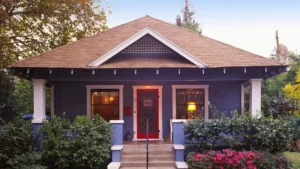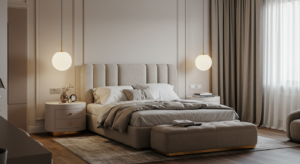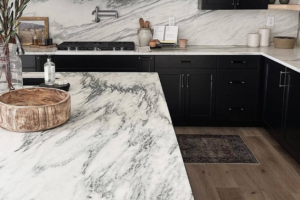When Lisa and David bought their new home, they were thrilled with its spacious open-plan design. However, they quickly noticed one downside—parts of the living room seemed perpetually dim, even during the day. While most would consider adding traditional windows or skylights, their architect had a different suggestion: clerestory windows. With their unique placement high on the walls, these windows would flood their space with natural light without compromising privacy or wall space. Intrigued, Lisa and David decided to explore this architectural feature further, and they soon discovered the benefits that clerestory windows could offer to their home’s ambiance and energy efficiency.
This article defines clerestory windows, delves into their history, and explores their growing popularity in modern home design. We will also discuss their energy-saving potential, provide design tips, and back up these insights with stats and expert opinions to guide you in considering this striking feature for your home.
- What are Clerestory Windows?
Clerestory windows definition are a type of window placed high on a wall, often close to the roofline or above eye level. The term “clerestory” originally comes from the Latin words clarus, meaning clear, and story, referring to a building level. Historically, clerestory windows were used in churches and cathedrals to allow light to enter the upper sections of large, expansive interiors. Today, they are common in both residential and commercial architecture, praised for their ability to let in natural light without sacrificing wall space for décor or privacy.
Clerestory windows are typically installed in rows, allowing natural light to pour in from above. They are particularly beneficial in open-plan homes where additional lighting can enhance large living spaces. According to Architectural Digest, clerestory windows are experiencing a resurgence in popularity, especially in modern homes that emphasize light, space, and clean lines.
- The History of Clerestory Windows
Clerestory windows have been around for thousands of years. They were famously used in ancient Egyptian temples, such as the Temple of Amun-Ra at Karnak, to illuminate the vast, shadowy interiors. In the Middle Ages, clerestory windows became a hallmark of Gothic architecture, allowing sunlight to filter into massive cathedrals and enhancing the spiritual experience of worshippers.
These windows were not only functional but also symbolic. They created an uplifting, heavenly atmosphere by bringing in light from above. Over time, clerestory windows have evolved from a religious architectural feature to a practical solution in residential design.
Today, about 15% of new home constructions in the U.S. incorporate clerestory windows, particularly in modern and eco-friendly home designs, according to a 2022 report from the National Association of Home Builders (NAHB).
- Benefits of Clerestory Windows
Clerestory windows offer numerous advantages for homeowners, blending both functional and aesthetic benefits:
- Natural Light: Clerestory windows are positioned to capture natural sunlight and distribute it throughout a room. Because they are high up, they minimize glare and prevent direct sunlight from overheating the room.
- Energy Efficiency: Homes with clerestory windows can benefit from reduced energy costs, as the additional sunlight reduces the need for artificial lighting during the day. A U.S. Department of Energy study found that natural lighting can reduce a home’s electricity usage by up to 10% annually.
- Privacy: Since these windows are placed above eye level, they allow sunlight to enter without compromising the occupants’ privacy. This makes them ideal for homes in densely populated areas or where large ground-level windows might otherwise expose the interior to passersby.
- Ventilation: Some clerestory windows are operable and can be opened to let in fresh air, making them functional for ventilation and lighting.
- Design Flexibility: By using clerestory windows, homeowners can free up lower wall space for art, furniture, or shelving without sacrificing natural light. This is particularly advantageous in rooms with limited window space.
- Clerestory Windows in Modern Home Design
Clerestory windows have become popular in modern architecture due to their minimalistic aesthetic and practical advantages. Architects favor them for creating a sense of openness and connection with the outdoors, all while maintaining clean, uncluttered walls.
- Mid-century Modern Homes: Clerestory windows were a common feature of mid-century modern homes, which were designed to create open, airy spaces filled with natural light. Architects like Frank Lloyd Wright famously used clerestory windows in their designs to highlight geometric shapes and blur the boundaries between indoor and outdoor spaces.
- Sustainable Homes: For eco-friendly or passive solar homes, clerestory windows are an excellent tool for maximizing sunlight in colder months and reducing energy consumption. Strategically placed on the south-facing side of a home, they allow sunlight to heat the space naturally.
A 2021 survey by Houzz reported that 45% of homeowners looking to renovate cited natural light as a top priority, with many opting for clerestory windows.
- Design Considerations for Clerestory Windows
When incorporating clerestory windows into a home, there are several design considerations to keep in mind:
- Orientation: The placement of clerestory windows about the sun is crucial. For maximum sunlight, they should face the south in the Northern Hemisphere or the north in the Southern Hemisphere. This positioning allows for optimal sunlight in winter while minimizing overheating in summer.
- Room Size: Clerestory windows work best in rooms with high ceilings or open layouts, where the light can disperse evenly throughout the space. They may be less effective in small, enclosed rooms where light has limited reach.
- Window Size: The size of the clerestory window can dramatically impact the light entering the room. More oversized windows will let in more light, but it’s crucial to balance this with insulation needs to prevent heat loss during colder months.
- Frame Materials: Like all windows, clerestory windows can be customized with different frame materials. Wood frames offer a classic look, while aluminum or fiberglass frames are more modern and durable. Each material provides various levels of insulation and maintenance needs.
- Clerestory Windows and Energy Efficiency
One of the standout features of clerestory windows is their ability to enhance energy efficiency. By allowing natural light to flood a room, these windows reduce the need for artificial lighting, especially in spaces that receive little natural light through traditional windows. Additionally, when properly insulated, clerestory windows can contribute to passive solar heating during winter, capturing warmth from the sun and distributing it throughout the space.
According to the U.S. Green Building Council, energy-efficient homes with clerestory windows can reduce heating and cooling costs by up to 20%, particularly when paired with other green building practices like solar panels and energy-efficient insulation.
Conclusion: The Timeless Appeal of Clerestory Windows
Lisa and David ultimately decided to include clerestory windows in their home renovation, and the results were transformative. Their once-dark living room became bathed in soft, natural light throughout the day, creating a warm, inviting atmosphere that felt larger and more open. They also enjoyed the added energy savings, as their clerestory windows reduced the need for artificial lighting.
Whether you’re looking to brighten a space, improve energy efficiency, or add an architectural element to your home, clerestory windows offer a timeless, functional, and aesthetically pleasing solution. From their ancient origins to modern applications, these windows have proven to be a versatile feature for homes of all styles and sizes.






